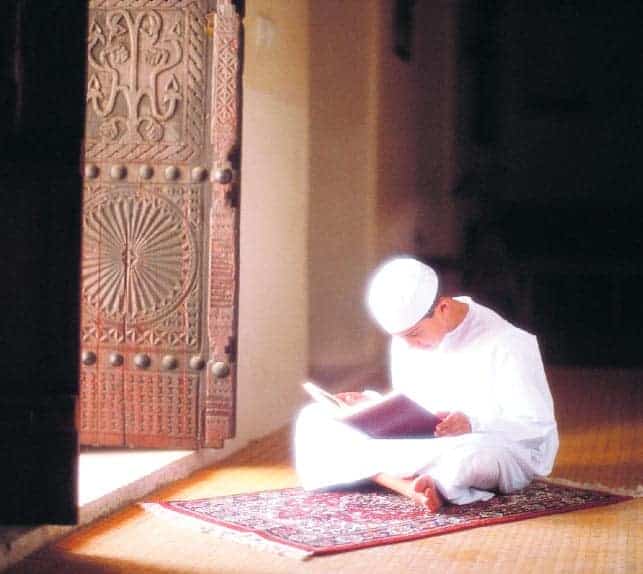Sebastian Wood says that science needs to welcome different faiths and do more to build bridges between the two communities
 A Muslim, a Christian and a Hindu walk into a lab… It sounds like the start of a joke, but this is what happened in late 2017 when I and two colleagues met to talk about our experiences of having religious beliefs and working in science. The National Physical Laboratory (NPL) in the UK has respect and inclusivity embedded in its core values and, like many scientific organizations, is learning to value and support equality, diversity and inclusion. What started as a little chat in the lab soon transformed into the NPL’s faith and religious diversity group that now supports people with all beliefs to thrive in the workplace.
A Muslim, a Christian and a Hindu walk into a lab… It sounds like the start of a joke, but this is what happened in late 2017 when I and two colleagues met to talk about our experiences of having religious beliefs and working in science. The National Physical Laboratory (NPL) in the UK has respect and inclusivity embedded in its core values and, like many scientific organizations, is learning to value and support equality, diversity and inclusion. What started as a little chat in the lab soon transformed into the NPL’s faith and religious diversity group that now supports people with all beliefs to thrive in the workplace.
My colleagues and I often talk about “enabling everyone to bring 100% of themselves to work”. When it comes to religion this mostly concerns practical adjustments to support inclusivity: providing a prayer room and ablution facilities on site; considering religious dietary requirements for meetings; as well as taking note of religious sensitivities when choosing suitable venues for events. Yet there is also a wider need for education. Many of us are unaware of the different religious holidays or observances that might affect our colleagues and are afraid of unwittingly causing offence by asking about others’ beliefs or practices.
Changing attitudes
A British Social Attitudes survey in 2019 found that 48% of the UK population identifies as religious and that since 1983 there has been a decline in the proportion of Christians, an increase in the non-religiously affiliated, as well as a rapid rise in the Muslim population, along with other minority religions (up from 2% to 9%). In other words, the beliefs and worldviews of the UK population are becoming more diverse as we move away from a predominantly Christian population to a more mixed one. Yet in this regard – as in other aspects of diversity – the UK scientific community is strikingly out-of-step with society. Indeed, a report from Rice University in 2016 found that just 27% of UK scientists identify as religious compared with 47% of the general population (Socius 10.1177/2378023116664353).
Neither society nor scientific pursuits stand to benefit from being out-of-step with each other
So, what is keeping religious people away from science? It is tempting to follow the Enlightenment philosophy that places science and religion in conflict: “as science advances, religion declines”. But that is far too simple. The Rice report compares eight countries, finding that the disparity between scientists and the general population who identify as religious is small in nations such as Turkey and India, while in others such as Taiwan and Hong Kong religious people are even over-represented in science. That picture is very different from the UK and other western countries where the religiously affiliated are strikingly under-represented. The report also finds that most scientists do not believe there is a conflict between science and religion – instead it being more a societal issue than a philosophical one.
Irrespective of the reasons why religious people are under-represented in science, which are no doubt manifold and complex, I believe that neither society nor scientific pursuits stand to benefit from being out-of-step with each other. Rachel Brazil’s insightful Physics World article “Fighting flat-Earth theory” traces the rise of belief in a flat Earth back to religious convictions. It stands as a warning that we need to build bridges between scientific and religious communities rather than allowing the divide to widen further. In a society that increasingly recognizes the value of diversity, it is worth reflecting on the history of science to see that no single religion or worldview has a monopoly on scientific progress. Even a cursory glance reveals profound contributions to science from individuals representing the full range of religious and non-religious worldviews, both historic and contemporary. Clearly this diversity of thinking is of enormous and proven value to science and technology, and is something to be treasured, nurtured and encouraged.
An open environment
At NPL we have made “inter faith week” a regular fixture in our calendar. This is a national initiative that supports and encourages constructive interactions between people with different beliefs to build relationships and mutual understanding, recognizing common values as well as differences. We also encourage colleagues to share their experiences of how their beliefs affect their work and invite guest speakers to talk about a subject relating science to religion. Over the past three years we have had talks on the relationship between artificial intelligence and religion, the role of faith in science and the health benefits of intermittent fasting. Each year we find that there is an enormous desire to learn about and discuss these topics.

Science in the Muslim world
The very nature of religious diversity is that we fundamentally and profoundly disagree with one another. It is no secret that our different worldviews are mutually incompatible. So, we do not shy away from disagreement and debate within a respectful and constructive context, but we come together within the scientific community to tackle discriminatory behaviours. Ultimately, we are united by the thing that brought us together in the first place: science.
